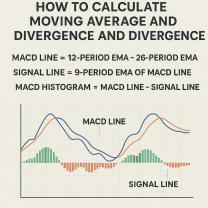Why does the stock market fluctuate daily?
The stock market fluctuates daily due to a combination of factors, and these fluctuations are an inherent part of the financial markets. Several key reasons contribute to daily stock market fluctuations:
Economic Data Releases: Economic indicators, such as employment numbers, GDP growth, inflation, and consumer sentiment, are released regularly. These data points can significantly impact investor sentiment and stock prices. Positive economic news tends to boost markets, while negative data can lead to declines.
Corporate Earnings Reports: Companies report their financial performance each quarter. Earnings reports that exceed or fall short of expectations can influence stock prices. Investors react to the profitability and outlook of individual companies, as well as overall industry and market conditions.
Global Events: Events both within and outside a country can impact stock markets. Geopolitical events, such as wars, elections, trade disputes, and diplomatic tensions, can create uncertainty and market volatility.
Interest Rates: Central banks' decisions on interest rates can have a significant effect on stock markets. When rates rise, the cost of borrowing increases, which can affect corporate profits and investor behavior.
Market Sentiment: Investor sentiment can fluctuate daily based on various factors, including news, rumors, and social media. Emotions and market psychology can drive short-term buying or selling decisions.
Trading Volume: The number of shares being bought and sold on a given day can impact stock prices. High trading volume can lead to more significant price swings.
Technical Factors: Technical analysis involves studying charts, patterns, and trading indicators. Traders often use technical analysis to make short-term trading decisions, which can lead to intraday price fluctuations.
Algorithmic Trading: High-frequency trading and algorithmic trading use complex mathematical models to execute trades. These algorithms can react to market conditions in a matter of milliseconds, contributing to intraday market volatility.
Market Speculation: Speculators may buy and sell stocks based on short-term price movements, adding to daily fluctuations. These traders are often motivated by short-term profit opportunities.
Macroeconomic Factors: Broader economic conditions, such as interest rates, inflation, and overall market health, can influence market trends over time.
News and Events: News, both positive and negative, can have an immediate impact on stock prices. Earnings warnings, product recalls, mergers, or legal issues can lead to significant daily fluctuations.
Market Liquidity: The ease with which stocks can be bought or sold can impact daily fluctuations. Illiquid markets can experience more substantial price movements.
Market Structure: The structure of the stock market itself, including the role of market makers, exchanges, and trading rules, can contribute to daily fluctuations.
Daily stock market fluctuations are the result of the dynamic interplay of these and other factors. It's essential for investors to have a diversified portfolio, a long-term investment perspective, and a clear understanding of their investment goals to navigate the daily ups and downs of the market. Additionally, consulting with financial professionals and staying informed about market developments can help investors make informed decisions.
Factors contributing to daily fluctuations in the stock market
There are a number of factors that contribute to daily fluctuations in the stock market. Some of the most important factors include:
- Economic data: Economic data releases, such as GDP growth, unemployment figures, and consumer confidence, can have a significant impact on the stock market. If the data is better than expected, it can boost investor sentiment and lead to higher stock prices. Conversely, if the data is worse than expected, it can dampen investor sentiment and lead to lower stock prices.
- Corporate earnings: Corporate earnings reports can also have a significant impact on the stock market. If a company reports strong earnings, it can boost investor confidence in the company and lead to higher stock prices. Conversely, if a company reports weak earnings, it can dampen investor confidence in the company and lead to lower stock prices.
- Geopolitical events: Geopolitical events, such as wars, terrorist attacks, and natural disasters, can also have a significant impact on the stock market. These events can create uncertainty and risk aversion in the markets, which can lead to a sell-off of stocks.
- Market sentiment: Market sentiment, or investor psychology, can also play a role in daily stock market fluctuations. When investors are optimistic about the future of the economy and the stock market, they are more likely to buy stocks, which can lead to higher stock prices. Conversely, when investors are pessimistic about the future, they are more likely to sell stocks, which can lead to lower stock prices.
- Supply and demand: Supply and demand also play a role in daily stock market fluctuations. When there is more demand for a stock than there is supply, the price of the stock will tend to rise. Conversely, when there is more supply of a stock than there is demand, the price of the stock will tend to fall.
Market sentiment and its impact on stock prices
Market sentiment is one of the most important factors that contribute to daily stock market fluctuations. When investors are optimistic about the future of the economy and the stock market, they are more likely to buy stocks, which can lead to higher stock prices. Conversely, when investors are pessimistic about the future, they are more likely to sell stocks, which can lead to lower stock prices.
Market sentiment can be influenced by a number of factors, including economic data, corporate earnings, geopolitical events, and even the weather. However, it is important to note that market sentiment can also be self-reinforcing. This means that when investors are optimistic, they are more likely to buy stocks, which can lead to higher stock prices, which can further boost investor sentiment. Conversely, when investors are pessimistic, they are more likely to sell stocks, which can lead to lower stock prices, which can further dampen investor sentiment.
Economic indicators and news events that influence stock market movements
Economic indicators and news events can also have a significant impact on stock market movements. Economic indicators, such as GDP growth, unemployment figures, and consumer confidence, can provide investors with insights into the health of the economy. News events, such as wars, terrorist attacks, and natural disasters, can also have a significant impact on the stock market, as they can create uncertainty and risk aversion in the markets.
The role of supply and demand in stock market fluctuations
Supply and demand play a fundamental role in daily stock market fluctuations. When there is more demand for a stock than there is supply, the price of the stock will tend to rise. Conversely, when there is more supply of a stock than there is demand, the price of the stock will tend to fall.
The supply and demand for a stock can be influenced by a number of factors, including the company's financial performance, the overall health of the economy, and investor sentiment. For example, if a company reports strong earnings, it is likely that there will be more demand for the company's stock, which can lead to higher stock prices. Conversely, if the economy is in a recession, there is likely to be less demand for stocks overall, which can lead to lower stock prices.
Strategies for investors to navigate daily stock market fluctuations
Investors can use a number of strategies to navigate daily stock market fluctuations. One common strategy is to invest for the long term. This means that investors should focus on the long-term performance of their investments, rather than trying to time the market. Another common strategy is to diversify their portfolios. This means that investors should invest in a variety of different stocks, sectors, and asset classes. This can help to reduce risk and protect against losses.
Investors can also use technical analysis to try to identify trends in the stock market. Technical analysis involves studying historical stock price data and chart patterns to try to predict future price movements. However, it is important to note that technical analysis is not always accurate, and it should not be used in isolation when making investment decisions.
Overall, there are a number of factors that contribute to daily stock market fluctuations. Investors












